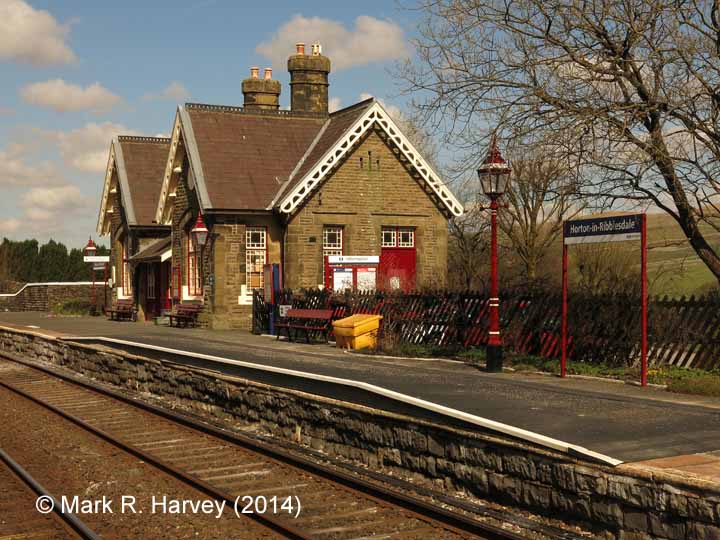Horton-in-Ribblesdale station lies on a relatively tight curve and the associated cant (sideways lean) of the tracks has different consequences for the two passenger platforms.
For the 'down' (northbound) platform, the cant reduces the gap, making it relatively easy for most passengers to board and alight from the trains. If ramped access is needed, it can be safely provided by the guard using one of the portable folding ramps that are carried on the trains.
For the 'up' (southbound) platform, the cant increases the gap significantly, to the extent that even the most agile of passengers can find it difficult (and potentially dangerous) to board and alight from the trains. The traditional method of addressing this problem was to provide portable wooden box steps on the platform. When all stations were staffed and passenger carriages had external running boards, these arrangements were adequate for most able-bodied travellers. However, this was not the case for passengers needing step-free access as the portable ramps were too steep to be used safely.
The ideal solution would be to reduce the gap between train and platform edge by increasing the height of the 'up' platform along its entire operational length. This has been done elsewhere within the SCRCA, but Network Rail chose a cheaper solution for this location. In 2013, a modular system known as 'the easier access area' was used to create a short, fully ramped section of raised platform (see Image 1). The system has a design life of 50 years and it uses prefabricated components made from fibre reinforced plastic. It can be installed by a handful of people using simple tools in just a few days, often without the need for a line possession. This innovative system is more commonly known 'the Harrington Hump' (a nickname it acquired following the installation of the first production system at Harrington station in Cumbria) and it is claimed.
The cost of Horton's 'hump' was met by funding from the Department for Transport’s 'Access For All' programme ("a £5m project to provide easier access on 80 platforms at 62 stations in England and Wales").

